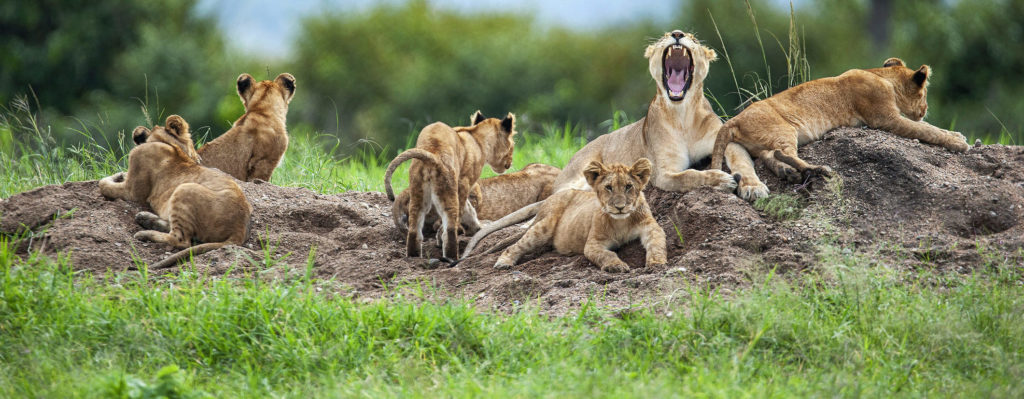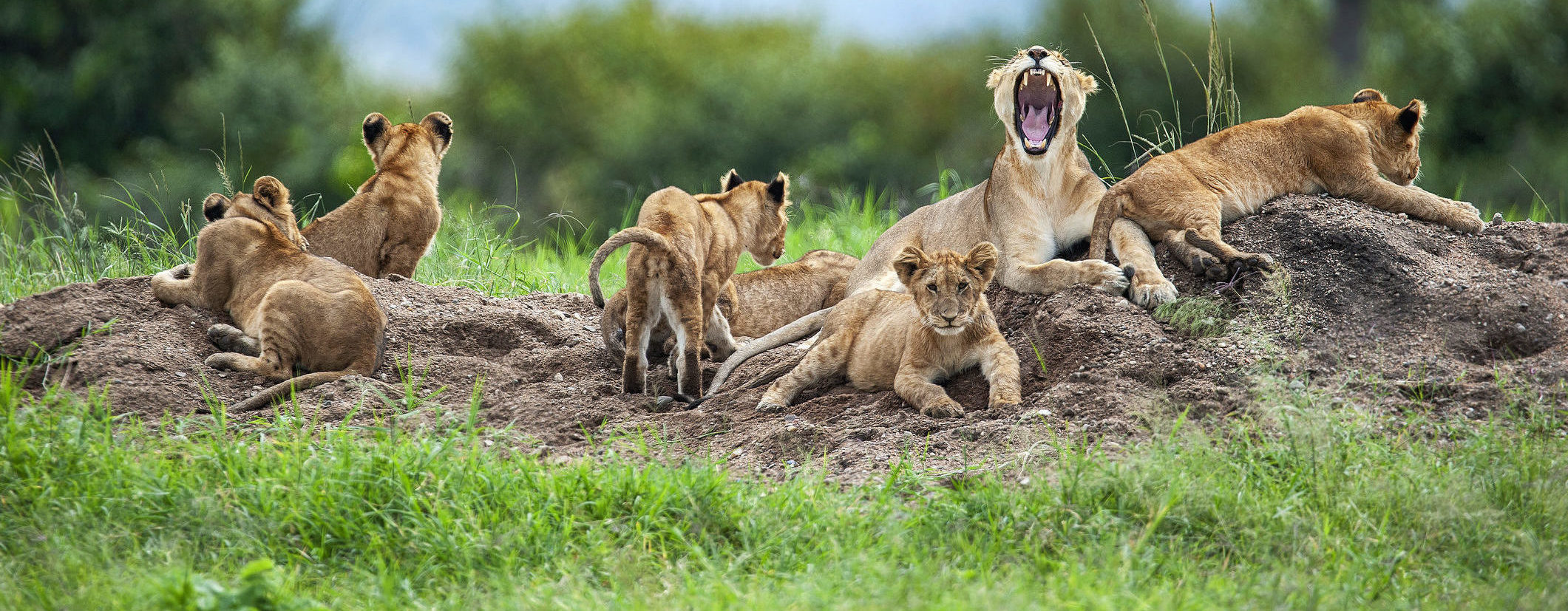Call 01306 744 656 or
Call 01306 744 656 or


Welcome to the start of your wildlife adventure! From small group safaris or privately guided taster experiences to off-the-beaten track wilderness adventures, no two safaris are the same. Heading out on morning game drives to spot animals you’ve always dreamed of seeing and then sharing tales around a campfire sipping sundowners will make everlasting memories. Choosing your ideal African safari holiday is an exciting part of the process, a part that our team of highly experienced Africa travel experts are waiting to help you with.
Getting there
East Africa is easy to reach, with daily flights to Nairobi and Kilimanjaro airports. The national parks and reserves are then just an adventurous drive or short light aircraft flight away. In South Africa there are direct daily flights to Cape Town and Johannesburg, with connections to Kruger, the Eastern Cape, Victoria Falls, and Botswana.
How long do I need?
Two to three nights in each of your chosen national parks or reserves is ideal, with a little longer if only doing one reserve. With so much variety in Southern Africa, focus on smaller areas allowing time to really explore each destination.
Daily routine
Wake up with coffee brought to your tent, early morning game drive in 4×4 safari vehicles accompanied by an expert guide, back to camp for lunch and to relax during the hottest part of the day. Then a mid-afternoon game drive before returning to camp for dinner and drinks around the fire.
In South Africa we recommend private reserves, where you can go off-road to get as close as possible to the wildlife with game drives twice a day in open-sided 4x4s. Many private reserves also offer walking safaris and night drives. Botswana, Namibia, Rwanda, or Zimbabwe offer a less conventional safari experience, often focused on specific species or alternative modes of transport.
Get packing
Soft bags are recommended for all safaris and are a must on fly-in safaris where there’s a luggage limit of 15kg. Sturdy shoes are recommended, with proper walking boots/shoes essential for bush activities or walking safaris. Neutral coloured clothing (khaki, brown, tan, beige) is best, to blend into the landscape, avoid scaring the animals, and handle the inevitable dust and dirt. Long-sleeved shirts protect you from mosquitos and the sun, layers offer the greatest flexibility with changing temperatures, and remember some warm garments for those cold evenings. Also pack sunglasses, a sunhat, sun cream, insect repellent, and a swimsuit if your lodge has a pool. A day bag is useful to hold your camera, binoculars, water bottle, books, spare batteries, and memory cards.
The vast continent of Africa plays host to the world’s most spectacular safari destinations. Whether you’re hoping to spot the Big Five or something a little rarer, a memorable adventure awaits.
Kenya: One of the best places on earth to spot lion, rhino, elephant, Cape buffalo and leopard – often referred to as the ‘Big Five’. Each year between July to October the Maasai Mara plays host to part of the Great Migration, hailed ‘the greatest wildlife show on earth’. Many camps are unfenced offering an authentic experience with wildlife completely free to roam.
Tanzania: The Ngorongoro Crater is a natural amphitheatre with over 30,000 animals and year-round game viewing, while the Serengeti boasts big cat spotting amongst ancient baobab trees, world-class luxury tented camps, and unforgettable hot air balloon rides. The quieter southern parks offer great bird watching, wilderness safaris, and unrivalled star gazing.
South Africa: Kruger National Park is ideal for spotting Africa’s ‘Big Five’, while from July to December you can enjoy whale-watching in Hermanus. There are plenty of private game reserves including malaria-free destinations with boutique hotels and luxury safari lodges. South Africa is perfect for a shorter safari combined with exploring picture-postcard scenery, historic cities, and world class beaches.
Botswana: The Great Okavango Delta offers water-based safari experiences, while the Makgadikgadi Salt Pans are famous for meerkats and an annual migration of over 20,000 zebras. In Chobe National Park you can see the world’s largest elephant herds and endangered species such as African painted dogs. Transfers are commonly made by light aircraft, with the chance to enjoy the unique landscapes from above.
Namibia: Although most famous for its dramatic landscapes, Namibia is also home to some impressive and unusual wildlife, with endemic black-faced impalas and endangered black rhino, as well as desert-adapted elephants and the world’s largest population of cheetahs. Etosha National Park is the best place for a safari, with spring-fed waterholes that teem with wildlife, particularly during the dry season from June to November.
Zimbabwe: One of the most spectacular and unspoilt wildlife destinations in Southern Africa, where you can head into the wilderness on walking safaris with some of the best wildlife guides in the world. Mosi-oa-Tunya National Park is home to the Angolan giraffe, Burchell’s zebra, and Cape buffalo, as well as the mighty Victoria Falls which forms the border with neighbouring Zambia.
Rwanda: Home to 10 mountain gorilla families, the dramatic landscape of Volcanoes National Park is one of the best places in the world for gorilla sightings. The dense forests are alive with varied flora and fauna including colobus and mangabey monkeys, while Nyungwe National Park is popular for Chimpanzee trekking.
National parks or conservancies
With their easy access and vast variety of wildlife and accommodation, the big-name national parks grab most attention. They also attract most visitors, but plan carefully and you can still enjoy the best of both worlds with plenty of rich wildlife but fewer crowds.
Another great option are the neighbouring conservancies or private reserves, sustainably managed by private landowners or community groups to conserve wildlife in their natural habitat. Vehicle numbers are limited, creating a wilder and more exclusive game drive experience with more adventurous activities such as guided bush safaris and night game drives.
Lodges or tented camps
Lodges are usually larger properties with modern facilities like air-conditioning and swimming pools. They often boast spectacular locations right in the heart of the reserves but can lack the intimacy of a smaller camp.
Alternatively, spend your nights under canvas in a tented camp ranging from rustic havens to luxurious tented suites reminiscent of five-star hotel rooms. Many camps are unfenced, allowing wildlife to pass through day and night.
You’ll find fantastic wildlife viewing in Africa at any time of the year. The main things to consider are weather, cost, and the wildlife you hope to see on safari.
January to March: It’s the dry season in Kenya and Tanzania. Prices are cheaper and it’s a great time for game viewing, as animals are easier to spot in the shorter grasses and around waterholes. In Tanzania, the migration herds are in the southern Serengeti where most of the baby wildebeest are born in February. It’s also the best time for birdwatching in Tarangire.
It’s hot in South Africa, with short bursts of rain, lush green nature reserves, plenty of baby animals and great bird watching in the Kruger. It can be busy until mid-January, but in March you’ll catch the end of summer while avoiding the crowds.
It’s the wet season in Botswana and Zimbabwe, bringing lush landscapes and plenty of animals and birds. It’s a good time to avoid the crowds, although in Zimbabwe some lodges close in Hwange and access to Mana Pools is limited.
Rainy season is in full swing in Rwanda’s Nyungwe Forest. There are some dry weeks in January, as well as good savings on gorilla permits at this time of year.
April to May: It’s peak rainy season in Kenya and Tanzania. It’s a good time to escape the crowds and get the best value, just be prepared for some more adventurous game drives in the mud!
The dry season begins in South Africa, Botswana, and Zimbabwe. This brings mild weather and more active animals that are easier to spot in the shorter grasses and around waterholes. In Botswana these are great months to see elephants in Chobe.
This is rainy season in Rwanda’s Volcanoes National Park and Nyungwe Forest.
July to September: It’s the most popular, and most expensive, time to go on safari in Kenya, as the Great Wildebeest Migration herds are usually in the Maasai Mara. Book far in advance to secure your first-choice camps or lodges.
In Tanzania, the migration herds are in the northern Serengeti. It’s also the most expensive time to travel, but prices don’t jump as dramatically as in the Maasai Mara.
The dry season continues in South Africa, Botswana, Namibia and Zimbabwe with excellent wildlife opportunities. It’s whale watching season around Hermanus in South Africa, the best time to spot game in Botswana’s Okavango Delta, and photographic heaven at Zimbabwe’s Victoria Falls.
These driest months in Rwanda are the most popular time for gorilla trekking and chimpanzee trekking.
October to December: In Kenya and Tanzania, November to December is the short rainy season. It’s a good time to spot new-born animals and migratory birds in Kenya, while in Tanzania you’ll escape the crowds and get the best value.
South Africa’s weather goes from mild in October to hot in December, a month when it’s also busy. You may still spot whales until the end of November.
October is the hottest month in Botswana and Zimbabwe. The wet season begins in November, when you’ll find the verdant parks busier with new-born animals than tourists.
In Rwanda, October to November is rainy season in Volcanoes National Park and the Nyungwe Forest, while December stays mostly dry.
4×4 safari vehicle or fly-in
Travelling by road will save you money, as well as giving a great opportunity to soak up the scenery and gain a genuine feel for the destination. The flip side is that mileages can be long and road conditions poor, although this does add to the sense of adventure. Our private 4×4 safaris feature your own vehicle and driver/guide, while scheduled small group safaris have a maximum of 6 people per vehicle with window seats guaranteed.
Fly-in safaris ramp up the level of style and comfort, with light aircraft offering a bird’s eye view of the landscape below. Travel times are vastly reduced, as flights land at a local airstrip right in the heart of the national park or conservancy, with the opportunity to spot wildlife from the outset. You’ll then head out on daily 4×4 game drives from your accommodation. Light aircraft is the only viable way to get around some remote destinations.
Independent safari or escorted small group
Private tailor-made itineraries offer complete flexibility and are popular with couples, groups of friends, and families. You have free rein to compile your dream safari itinerary, hand selecting every individual element along the way with the help of our travel experts.
Another great option is to share your adventure experience with a small group of like-minded travellers, on one of our guaranteed escorted small group safaris departures. You’ll learn about the regions wildlife and culture from an insightful local driver/guide, using vehicles exclusively for Alfred& guests with a maximum of six passengers. Group departures offer great value for money, costing substantially less than a comparable private itinerary.
Spotting animals in the wild for the very first time is an unforgettable experience, but for children the excitement is off the charts! Many lodges and camps are geared perfectly towards families with secluded oversized tents and a wide range of fun and inspiring activities for children as young as 7. Morning and afternoon game drives usually last 2 to 3-hours, accompanied by expert guides who are great at tailoring the experience to a younger audience. Back at camp there’s time to relax, while kids enjoy activities like tree planting, survival skills and learning how to identify animal tracks.
In Kenya and Tanzania, we offer small group safaris for guests aged 7 and over with the opportunity to socialise with other families, while South Africa is a favourite family destination with its malaria-free game reserves and world class beaches.
Your journey will start with one of our UK team – someone like Becky, who's travelled extensively in your chosen destination. They’ll shape your ideas into the trip of a lifetime. But they won't do it alone. They'll draw on the expertise of our contacts on the ground, connecting you to the people who'll make your holiday one you'll always remember - the rangers who'll ensure you'll spot the best wildlife, the balloon pilots who can wow you with Africa's spectacular vistas and the camp managers who can recommend the very best spot for your sundowner.
Freephone an expert 01306 744 656

Going above and beyond to help our customers is just one of the reasons why we’ve been awarded Recommended Provider status by the UK’s leading consumer organisation Which? based on their latest survey results.

Travel with us for total peace of mind. All our holidays are ATOL protected, we’re members of ABTA (the leading travel industry association) and you’ll have our full support throughout your travels.